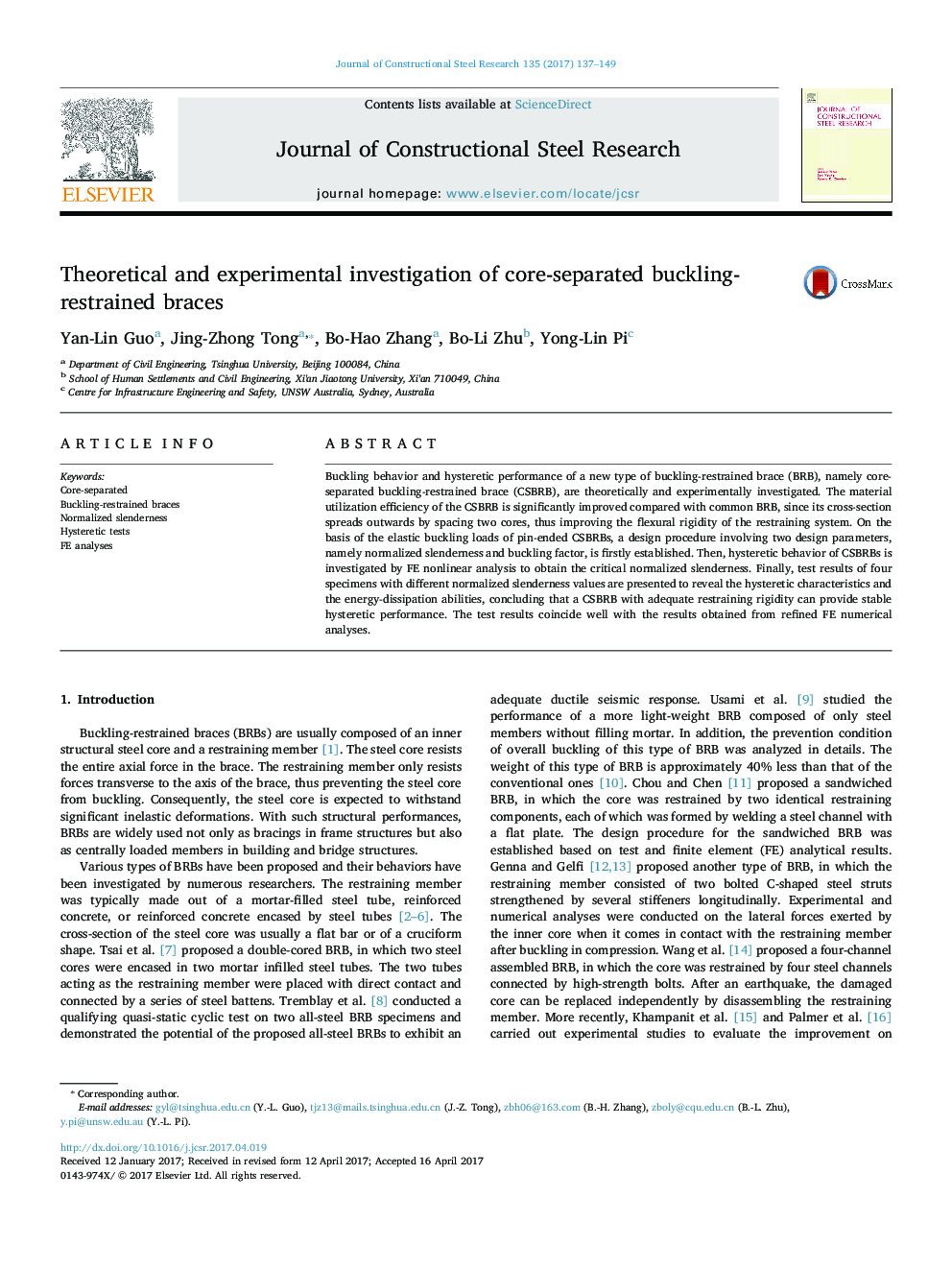| Article ID | Journal | Published Year | Pages | File Type |
|---|---|---|---|---|
| 4923442 | Journal of Constructional Steel Research | 2017 | 13 Pages |
Abstract
Buckling behavior and hysteretic performance of a new type of buckling-restrained brace (BRB), namely core-separated buckling-restrained brace (CSBRB), are theoretically and experimentally investigated. The material utilization efficiency of the CSBRB is significantly improved compared with common BRB, since its cross-section spreads outwards by spacing two cores, thus improving the flexural rigidity of the restraining system. On the basis of the elastic buckling loads of pin-ended CSBRBs, a design procedure involving two design parameters, namely normalized slenderness and buckling factor, is firstly established. Then, hysteretic behavior of CSBRBs is investigated by FE nonlinear analysis to obtain the critical normalized slenderness. Finally, test results of four specimens with different normalized slenderness values are presented to reveal the hysteretic characteristics and the energy-dissipation abilities, concluding that a CSBRB with adequate restraining rigidity can provide stable hysteretic performance. The test results coincide well with the results obtained from refined FE numerical analyses.
Related Topics
Physical Sciences and Engineering
Engineering
Civil and Structural Engineering
Authors
Guo Yan-Lin, Tong Jing-Zhong, Zhang Bo-Hao, Zhu Bo-Li, Pi Yong-Lin,
